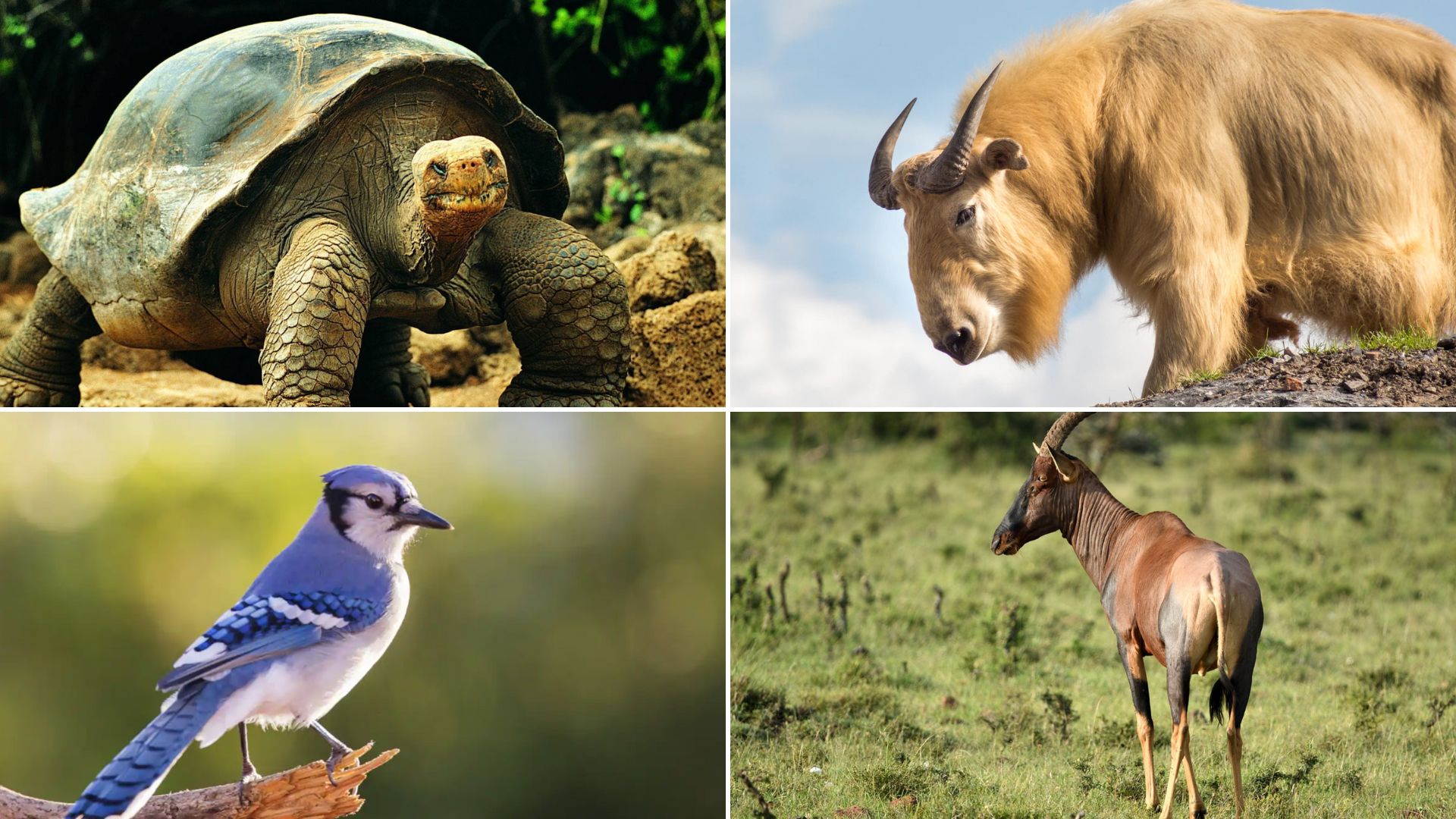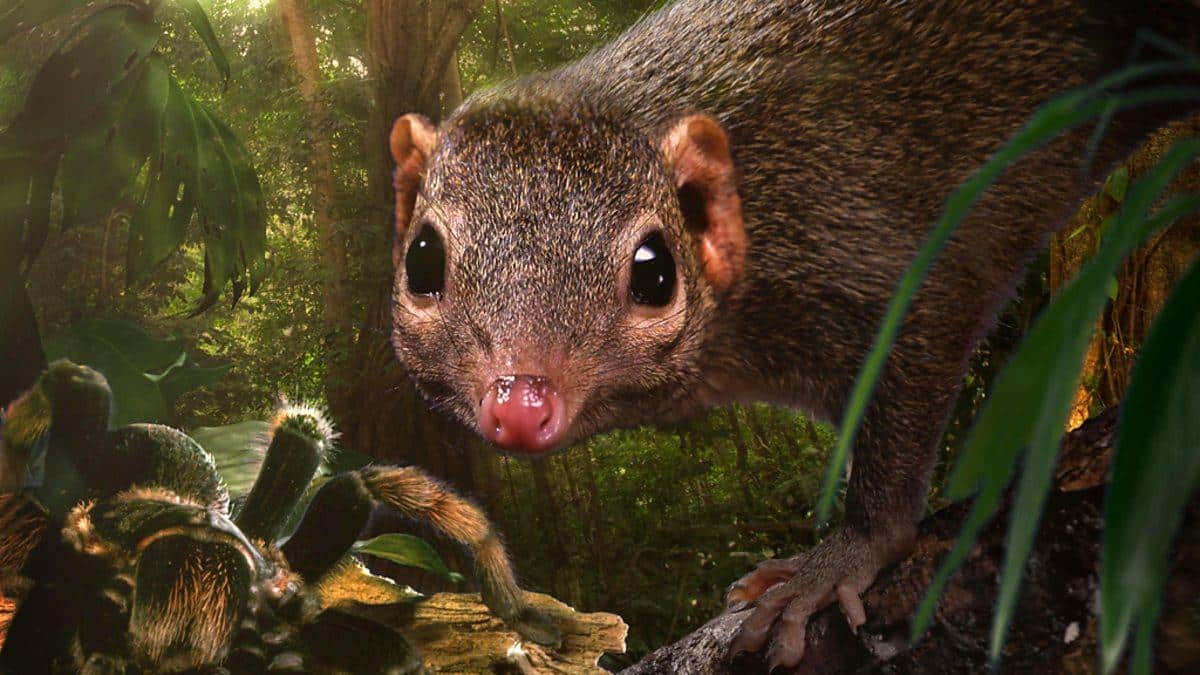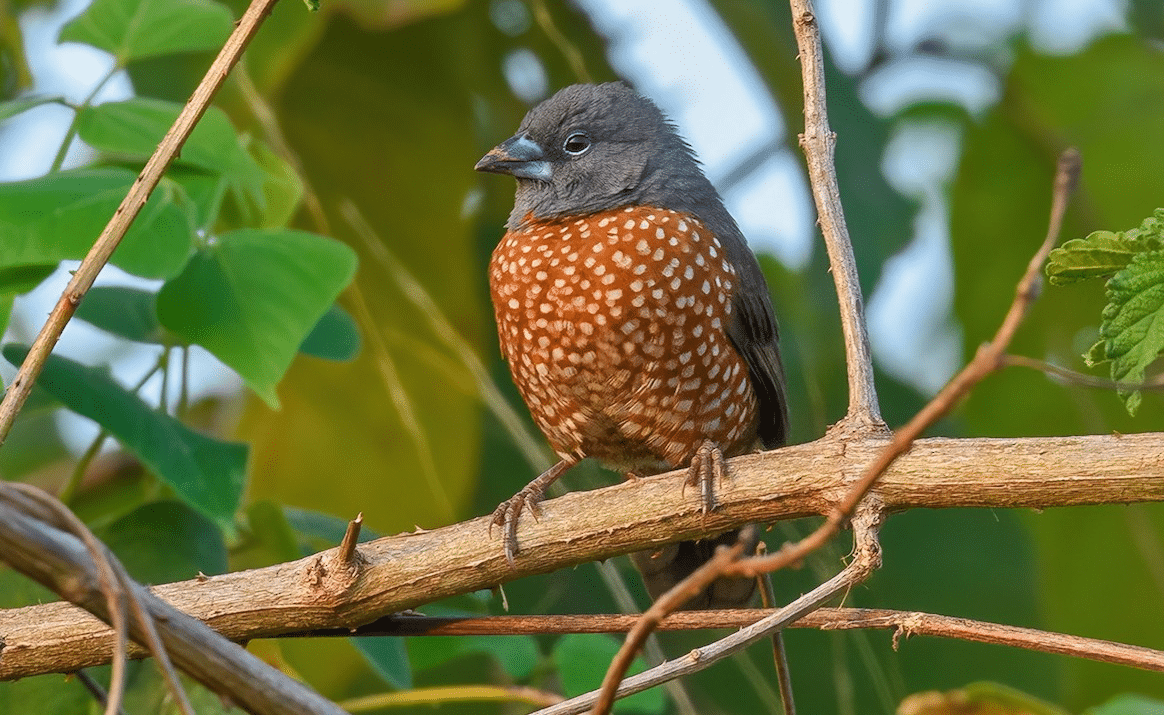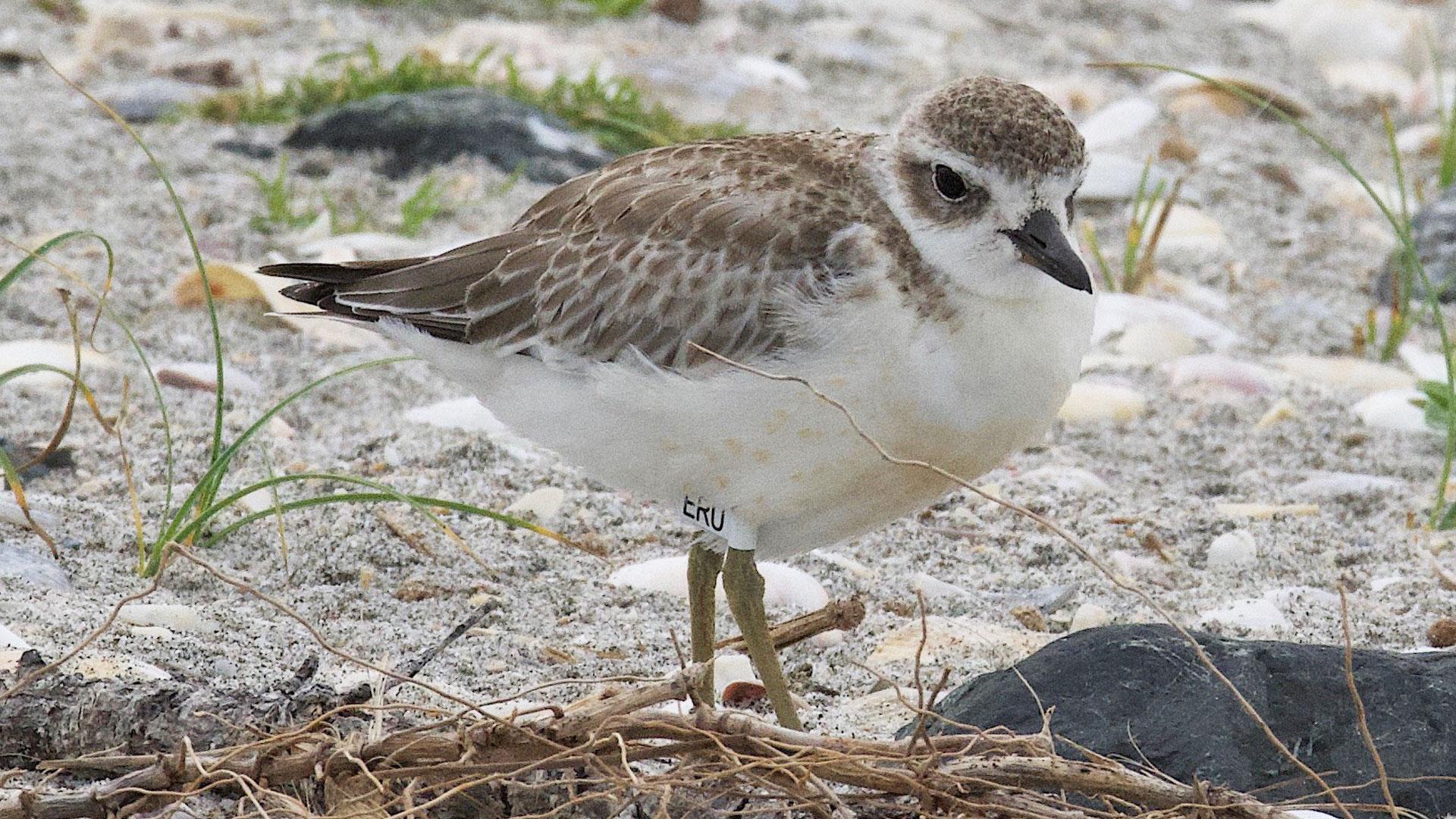Find the World of 45 Animals Starting with T
Get ready to embark on a thrilling travels through the fascinating world of animals that start with the letter T!
From towering mammals and colorful birds to tiny insects and elusive reptiles, these incredible creatures showcase the stunning diversity of life on Earth.
Along the way, you’ll uncover fascinating facts about their habitats, behaviors, diets, and survival strategies. Whether it’s their camouflage skills, strength, or unique adaptations, each animal has a story worth exploring.
This experience will spark your curiosity, expand your knowledge, and inspire a deeper appreciation for the natural world. Let’s dive into the wonders of the animal kingdom!
1. Tarantula
The tarantula is a type of hairy spider in the family Theraphosidae. These large arachnids are found in warm regions around the world. Some species can grow to have a leg span of over 12 inches.
- Place of Origin: Tropics and subtropics worldwide
- Regions of Habitat: Deserts, rainforests, and scrublands in the Americas, Africa, Asia, and Mediterranean regions
- Scientific Name: Various species in the family Theraphosidae
Interesting Facts: Tarantulas are generally not aggressive towards humans, but some species have venomous bites that can cause severe pain and discomfort.
2. Tapir
The tapir is an odd-toed, ungulate mammal that resembles a pig-like creature. These sturdy animals have a characteristic prehensile snout and enjoy spending time in water. They are excellent swimmers and can remain submerged for extended periods.
- Place of Origin: Central and South America and Southeast Asia
- Regions of Habitat: Tropical and subtropical forests, grasslands, and swamps
- Scientific Name: Various species in the family Tapiridae
Interesting Facts: Tapirs are considered “living fossils” as they have changed very little over millions of years. They are excellent swimmers and can use their flexible snouts to grab leaves and fruits.
3. Tiger
The tiger is a large feline predator known for its distinctive striped coat. These majestic animals are apex predators and play a crucial role in maintaining the balance of their ecosystems.
- Place of Origin: Asia
- Regions of Habitat: Tropical and subtropical forests, grasslands, and mangrove swamps in India, Southeast Asia, and the Russian Far East
- Scientific Name: Panthera tigris
Interesting Facts: Tigers are solitary hunters and apex predators. They are skilled swimmers and can even hunt prey in water. Their stripes are unique to each individual, much like human fingerprints.
4. Toucan
The toucan is a striking bird known for its large, colorful beak. These frugivorous birds are found in various tropical regions of the Americas and are known for their distinctive calls.
- Place of Origin: The Neotropics (Central and South America)
- Regions of Habitat: Tropical and subtropical forests, woodlands, and savannas
- Scientific Name: Various species in the family Ramphastidae
Interesting Facts: Toucans use their large beaks to reach fruits on branches that are too small to support their weight. Their beaks are also used for preening and protecting their nests.
5. Tamarin
The tamarin is a small primate from the family Callitrichidae. These active and social creatures are found in various regions of South America and are known for their distinctive facial features and cooperative breeding habits.
- Place of Origin: South America
- Regions of Habitat: Tropical and subtropical forests in the Amazon Basin and surrounding areas
- Scientific Name: Various species in the genera Saguinus and Leontopithecus
Interesting Facts: Tamarins are cooperative breeders, meaning that multiple adults help care for the young. They are also excellent leapers and can jump up to 5 meters (16 feet) between trees.
6. Tarsier
The tarsier is a small, nocturnal primate with large eyes and elongated feet. It is found in various Southeast Asian regions and is known for its ability to rotate its head almost 180 degrees.
- Place of Origin: Southeast Asia
- Regions of Habitat: Tropical and subtropical forests in the Philippines, Indonesia, Malaysia, and parts of Brunei
- Scientific Name: Various species in the family Tarsiidae
Interesting Facts: Tarsiers have the largest eyes relative to the body size of any mammal. Their elongated feet and fingers allow them to cling to vertical surfaces and jump from tree to tree.
7. Terrapin
The terrapin is a small, semi-aquatic turtle found in various regions worldwide. These reptiles are known for their ability to live in both freshwater and brackish environments.
- Place of Origin: Various regions worldwide
- Regions of Habitat: Freshwater and brackish environments, such as ponds, marshes, and estuaries
- Scientific Name: Various species in the family Emydidae
Interesting Facts: Terrapins have webbed feet and a streamlined shell, which aids in swimming. Some species can live for over 40 years in the wild.
8. Thorny Devil
The thorny devil is a small, unique lizard found in the deserts of central Australia. These reptiles are covered in spiky scales and have distinctive false heads on their backs to deter predators.
- Place of Origin: Australia
- Regions of Habitat: Arid and semi-arid regions of central and western Australia
- Scientific Name: Moloch horridus
Interesting Facts: Thorny devils collect water by channeling moisture from their bodies to their mouths using grooves between their spines. They are also able to survive for months without food or water.
9. Thrasher
The thrasher is a type of songbird found in various regions of the Americas. These birds are known for their loud, repetitive songs and ability to mimic other birds’ calls.
- Place of Origin: The Americas
- Regions of Habitat: Forests, deserts, and scrublands across North and South America
- Scientific Name: Various species in the family Mimidae
Interesting Facts: Thrashers are excellent singers and can produce complex songs. They often build their nests on or near the ground, well-camouflaged from predators.
10. Thylacine
The thylacine, also known as the Tasmanian tiger, was a carnivorous marsupial that is now extinct. These striped animals were once found in various regions of Australia and Tasmania.
- Place of Origin: Australia and Tasmania
- Regions of Habitat: Forests, grasslands, and coastal regions of Australia and Tasmania (before its extinction)
- Scientific Name: Thylacinus cynocephalus
Interesting Facts: The thylacine was the largest carnivorous marsupial in modern times. It was heavily hunted and persecuted, leading to its extinction in the wild in the early 20th century. The last known individual died in captivity in 1936.
11. Titi Monkey
The titi monkey is a small New World monkey found in various regions of South America. These primates are known for their monogamous social structure and their distinctive vocalizations.
- Place of Origin: South America
- Regions of Habitat: Tropical and subtropical forests in countries like Brazil, Colombia, Ecuador, Peru, and Bolivia
- Scientific Name: Various species in the genera Callicebus and Cheracebus
Interesting Facts: Titi monkeys form strong pair bonds and are one of the few monogamous primate species. They use a variety of loud calls to mark their territories and communicate with their mates.
12. Tomtit
The tomtit is a small, active bird found in various regions of Europe, Asia, and North Africa. It is known for its acrobatic movements and ability to cling to tree trunks and branches.
- Place of Origin: Europe, Asia, North Africa
- Regions of Habitat: Woodlands, parks, and gardens across their range
- Scientific Name: Various species in the family Paridae
Interesting Facts: Tomtits are agile, energetic birds that are constantly moving and exploring their surroundings. They are known for their ability to hang upside down while foraging insects.
13. Tortoise
The tortoise is a land-dwelling reptile found in various regions around the world. These slow-moving creatures are known for their long lifespans and ability to retract their heads and limbs into protective shells.
- Place of Origin: Various regions worldwide
- Regions of Habitat: Deserts, grasslands, and scrublands across multiple continents
- Scientific Name: Various species in the family Testudinidae
Interesting Facts: Tortoises are among the longest-living vertebrates, with some species known to live over 100 years. They are herbivorous and have a varied diet of grasses, leaves, and fruits.
14. Toucan Barbet
The toucan barbet is a colorful bird found in various regions of South America. It is known for its large, curved beaks and distinctive calls.
- Place of Origin: South America
- Regions of Habitat: Tropical and subtropical forests in countries like Brazil, Colombia, Ecuador, and Peru
- Scientific Name: Semnornis ramphastinus
Interesting Facts: The toucan barbet is closely related to toucans and uses its large beak for plucking fruits and berries from trees. It is also known for its loud, distinctive call that can be heard throughout the forest.
15. Tree Kangaroo
The tree kangaroo is a unique marsupial found in various regions of Papua New Guinea, Indonesia, and northeastern Australia. These animals are adapted for an arboreal lifestyle, spending most of their time in trees.
- Place of Origin: Papua New Guinea, Indonesia, northeastern Australia
- Regions of Habitat: Tropical and subtropical rainforests
- Scientific Name: Various species in the genus Dendrolagus
Interesting Facts: Tree kangaroos are excellent climbers and can jump between trees using their strong hind legs and tails for balance. They are skilled at moving across branches and can descend headfirst down tree trunks.
16. Tree Shrew
The tree shrew is a small mammal found in various regions of Southeast Asia. These agile creatures are distant relatives of primates and are known for their fast movements and ability to cling to tree trunks and branches.
- Place of Origin: Southeast Asia
- Regions of Habitat: Tropical and subtropical forests in countries like Malaysia, Indonesia, Thailand, and the Philippines
- Scientific Name: Various species in the order Scandentia
Interesting Facts: Tree shrews are excellent jumpers and can leap several feet between branches. They have a keen sense of smell and use scent marking to establish territories.
17. Treepie
The treepie is a type of bird found in various regions of Asia. These noisy and sociable birds are known for their distinctive calls and tendency to form large flocks.
- Place of Origin: Asia
- Regions of Habitat: Forests, woodlands, and urban areas across South and Southeast Asia
- Scientific Name: Various species in the genus Dendrocitta
Interesting Facts: Treepies are highly vocal birds known for loud, raucous calls. They are also highly social and often form large flocks, especially during the non-breeding season.
18. Trillian Nightjar
The Trillian nightjar is a nocturnal bird found in various regions of South America. These well-camouflaged birds are known for their distinctive calls and ability to blend into their surroundings.
- Place of Origin: South America
- Regions of Habitat: Tropical and subtropical forests in countries like Brazil, Colombia, and Peru
- Scientific Name: Nyctidromus albicollis
Interesting Facts: The Trillian nightjar has excellent camouflage, with its mottled plumage helping it blend into the leaf litter and bark of trees. During the day, it remains motionless, making it extremely difficult to spot.
19. Trumpeter Bird
The trumpeter bird is a large, distinctive bird found in various regions of South America. It is known for its loud, trumpet-like calls and impressive size.
- Place of Origin: South America
- Regions of Habitat: Tropical and subtropical forests in countries like Brazil, Venezuela, and Guyana
- Scientific Name: Psophia spp.
Interesting Facts: Trumpeter birds are among the largest bird species in South America. Their calls can be heard from miles away, and they are known for their remarkable ability to mimic the calls of other birds and animals.
20. Tuatara
The tuatara is a unique reptile found only in New Zealand. These ancient creatures are closely related to snakes and lizards but are classified in their order as Rhynchocephalia.
- Place of Origin: New Zealand
- Regions of Habitat: Coastal forests and islands around New Zealand
- Scientific Name: Sphenodon punctatus
Interesting Facts: The tuatara is a “living fossil,” having remained largely unchanged for over 200 million years. Its unique third eye on top of its head detects sunlight and regulates body temperature.
21. Tufted Deer
The tufted deer is a small deer species found in various regions of Asia. These shy and solitary animals are known for the distinctive tuft of black hair on their heads.
- Place of Origin: Asia
- Regions of Habitat: Forests and grasslands in countries like China, Myanmar, Thailand, and Vietnam
- Scientific Name: Elaphodus cephalophus
Interesting Facts: The tufted deer is one of the smallest deer species in the world, standing only about 50 cm (20 inches) tall at the shoulder. They are excellent swimmers and are known to enter water to escape predators.
22. Tufted Puffin
The tufted puffin is a distinctive seabird found in various regions of the North Pacific. These birds are known for their large, colorful beaks and the tufts of feathers on their heads.
- Place of Origin: North Pacific Ocean
- Regions of Habitat: Coastal regions and offshore islands in the North Pacific, including Alaska, Russia, and Canada
- Scientific Name: Fratercula cirrhata
Interesting Facts: Tufted puffins are excellent swimmers and divers, using their wings to propel themselves underwater to catch fish and other prey. Their beaks and facial features become even more vibrant and colorful during the breeding season.
23. Tuna
Tuna are large, predatory fish found in various oceans around the world. These fast-swimming fish are highly prized for their meat and are important in commercial and recreational fisheries.
- Place of Origin: Various oceans worldwide
- Regions of Habitat: Open waters of the Atlantic, Pacific, and Indian Oceans
- Scientific Name: Various species in the genus Thunnus
Interesting Facts: Tuna are among the fastest swimming fish, reaching up to 70 km/h (43 mph). They are endothermic, meaning they can regulate their body temperatures, which allows them to thrive in colder waters.
24. Turkey
The turkey is a large, domesticated bird that is widely consumed, especially during holidays like Thanksgiving in the United States. These birds are also found in the wild in various regions of North America.
- Place of Origin: North America
- Regions of Habitat: Forests, grasslands, and scrublands in North America (wild populations)
- Scientific Name: Meleagris gallopavo
Interesting Facts: Wild turkeys are excellent fliers and can reach up to 55 mph (88 km/h) while flying. They are also known for their distinctive gobbling calls, which attract mates and establish territories.
25. Turkmenian Kulan
The Turkmenian kulan is a subspecies of the Asiatic wild ass found in the deserts of Central Asia. These hardy equids are known for their ability to survive in harsh, arid environments.
- Place of Origin: Central Asia
- Regions of Habitat: Desert regions of Turkmenistan, Uzbekistan, and Kazakhstan
- Scientific Name: Equus hemionus kulan
Interesting Facts: The Turkmenian kulan is well-adapted to the desert, with its large hooves and the ability to go for long periods without water. They are social animals and live in small family groups led by a dominant male.
26. Turnstone
The turnstone is a small shorebird found in various coastal regions worldwide. It is known for its unique behavior of flipping over stones and other objects to find food.
- Place of Origin: Various regions worldwide
- Regions of Habitat: Coastal areas, beaches, and rocky shorelines during the breeding season; inland wetlands and mudflats during migration
- Scientific Name: Arenaria interpres
Interesting Facts: Turnstones use their short, sturdy beaks to flip over stones, shells, and other objects to find insects, crustaceans, and other small invertebrates beneath. They are highly migratory and travel long distances between breeding and wintering grounds.
27. Turquoise-Browed Motmot
The turquoise-browed motmot is a striking bird found in various regions of Central and South America. It is known for its distinctive appearance, long, racket-tipped tails, and bright turquoise markings.
- Place of Origin: Central and South America
- Regions of Habitat: Tropical and subtropical forests in countries like Mexico, Costa Rica, Panama, and Brazil
- Scientific Name: Eumomota superciliosa
Interesting Facts: The turquoise-browed motmot is known for its unique courtship display, where the male waves its racket-tipped tail in a figure-eight motion to attract a mate. They are also excellent at camouflaging their nests in tree cavities and crevices.
28. Takin
The takin is a large, stocky ungulate found in the mountainous regions of China, India, and Bhutan. These unusual-looking creatures are closely related to goats and sheep but have a distinct appearance, with a thick, shaggy coat and a prominent golden or reddish-brown nose.
- Place of Origin: Eastern Himalayas
- Regions of Habitat: Alpine meadows, rocky slopes, and coniferous forests in the Himalayan mountain ranges
- Scientific Name: Budorcas taxicolor
Interesting Facts: Despite their large size and weight, takins are excellent climbers who can easily navigate steep, rugged terrain. They are known for their peculiar behavior of licking rocks and trees, which is believed to help them obtain essential minerals. Takins are also iconic animals in the cultures and regions they inhabit, and they are sometimes referred to as “cattle of the gods.”
29. Twinspot
The twinspot is a small, brightly colored finch found in various regions of Africa. These birds are known for their distinctive plumage, which features two distinct spots on their wings.
- Place of Origin: Africa
- Regions of Habitat: Savannas, woodlands, and grasslands in the various areas of Africa
- Scientific Name: Various species in the genus Hypargos
Interesting Facts: Twinspots are often kept as pet birds due to their attractive appearances and pleasant songs. They are also known for their acrobatic behaviors, such as hanging upside down from branches and performing aerial maneuvers.
30. Two-Toned Puffer
The two-toned puffer is a species of pufferfish found in various regions of the Indo-Pacific. These unique fish are known for their ability to inflate their bodies with water or air, making them appear much larger than their actual size.
- Place of Origin: Indo-Pacific region
- Regions of Habitat: Coral reefs, lagoons, and shallow coastal waters in the Indian and Pacific Oceans
- Scientific Name: Arothron nigropunctatus
Interesting Facts: The two-toned puffer is named for its distinctive coloration, which features a yellow or green front half and a black or dark brown rear half. When threatened, they can inflate their bodies to several times their normal size, making them appear much larger and more intimidating to predators.
31. Tyrant Flycatcher
The tyrant flycatcher is a diverse group of insect-eating birds found in various regions of the Americas. These birds are known for their aggressive behavior in defending their territories and their distinctive flycatching techniques.
- Place of Origin: The Americas
- Regions of Habitat: Forests, woodlands, grasslands, and even urban areas across North, Central, and South America
- Scientific Name: Various species in the family Tyrannidae
Interesting Facts: Tyrant flycatchers are excellent aerial hunters, capable of catching insects mid-flight with precise maneuvers. They are also known for their loud, aggressive calls used to defend their territories from other birds and potential predators.
32. Tyrian Purple Snail
The Tyrian purple snail is a predatory sea snail found in various regions of the Mediterranean Sea. It is known for its unique ability to produce a highly valuable purple dye.
- Place of Origin: Mediterranean region
- Regions of Habitat: Rocky coastlines and shallow waters of the Mediterranean Sea
- Scientific Name: Hexaplex trunculus (formerly Murex trunculus)
Interesting Facts: The Tyrian purple dye produced by these snails was highly prized in ancient times and was used to dye the robes of royalty and other elite members of society. The dye is derived from a mucus secretion produced by the snail, and it takes thousands of snails to create a small amount of the valuable pigment.
33. Greater Prairie Chicken
The greater prairie chicken is a large ground-dwelling bird found in various regions of North America. These birds are known for their elaborate courtship displays, where the males inflate their bright orange air sacs and perform intricate dances to attract mates.
- Place of Origin: North America
- Regions of Habitat: Grasslands and prairies in the central United States and Canada
- Scientific Name: Tympanuchus cupido
Interesting Facts: The greater prairie chicken population has declined significantly due to habitat loss and hunting. Conservation efforts are underway to protect these iconic birds and their unique mating rituals, which take place on traditional “lekking” grounds.
34. Tāiko
The South Island taiko is a small, flightless bird endemic to New Zealand’s South Island. It is known for its distinctive call and its ability to thrive in alpine environments.
- Place of Origin: New Zealand
- Regions of Habitat: Alpine regions of New Zealand’s South Island
- Scientific Name: Porphyrio hochstetteri
Interesting Facts: The South Island taiko is a highly specialized bird adapted to the harsh conditions of the Southern Alps. Their unique whistling call can echo through the mountains, and their feathers provide excellent insulation against the cold.
35. Tamandua
The tamandua, also known as the lesser anteater, is a medium-sized mammal found in various regions of South and Central America. This distinctive creature is part of the anteater family and is known for its long, slender snout and powerful claws.
- Place of Origin: South and Central America
- Regions of Habitat: Tropical and subtropical forests, grasslands, and savannas
- Scientific Name: Tamandua tetradactyla
Interesting Facts: Tamanduas are excellent climbers and spend a significant portion of their time in trees, using their prehensile tails for balance and support. They feed primarily on ants and termites, which they capture with long, sticky tongues. Despite their small size, tamanduas are known for their fearless nature and will defend themselves fiercely when threatened, even against larger predators. They also play an important role in controlling ant and termite populations in their habitats.
36. Topi
The topi is a large antelope species found in various regions of eastern Africa. These graceful animals are known for their distinct reddish-brown coats and curved, lyre-shaped horns.
- Place of Origin: Eastern Africa
- Regions of Habitat: Savannas, grasslands, and open woodlands in countries like Kenya, Tanzania, and Uganda
- Scientific Name: Damaliscus lunatus
Interesting Facts: Topis are highly social animals and live in large herds that can number in the hundreds. They are skilled jumpers and can leap several meters into the air, which is thought to help them spot predators in the tall grass. Topis are also known for their unique antipredator behavior, forming a defensive circle with the calves in the center when threatened. Their striking appearance and impressive horns make them a popular sight for safari-goers in eastern Africa.
37. Tawny Frogmouth
The tawny frogmouth is a unique bird species in various regions of Australia, New Guinea, and Indonesia. These birds are known for their exceptional camouflage, which allows them to blend perfectly with tree bark.
- Place of Origin: Australia, New Guinea, and parts of Indonesia
- Regions of Habitat: Forests, woodlands, and urban areas with trees
- Scientific Name: Podargus strigoides
Interesting Facts: The tawny frogmouth is a nocturnal bird that spends much of its day perched motionless on tree branches disguised as a broken stump or branch. Their camouflage is so effective that they are often difficult to spot, even for experienced birdwatchers. Despite their name, they are not closely related to frogs or toads but are members of the nightjar family. Tawny frogmouths have wide, flat beaks and make a distinctive “oom-oom-oom” call at night while hunting for insects, which they swallow whole.
38. Termite Bird
The termite bird, also known as the termite-eating bird or the termitière, is a small passerine bird found in Central and West Africa. These birds are known for their unique nesting behavior and diet, which primarily consists of termites.
- Place of Origin: Central and West Africa
- Regions of Habitat: Savannas, woodlands, and forests across their range
- Scientific Name: Tockus spp. (various species in the genus Tockus)
Interesting Facts: Termite birds construct intricate nests by excavating termite mounds and using the excavated material to create their nest chambers within the mound. This behavior provides them with a well-insulated and protected nesting site and a readily available food source in the form of termites. These birds have specialized hooked bills for breaking into termite mounds and extracting the termites. They play an important role in controlling termite populations in their habitats. Termite birds are also known for their distinctive calls and are often heard before being seen.
39. Trogon
The trogon is a distinctive bird in various tropical regions worldwide, especially in the Americas. It is known for its brilliant colors and unique courtship behaviors.
- Place of Origin: Tropical regions worldwide
- Regions of Habitat: Rainforests, cloud forests, and dense woodlands
- Scientific Name: Various species in the family Trogonidae
Interesting Facts: Trogons are often called “courtship birds” due to their elaborate mating rituals, where males puff out their colorful breast feathers and bob their tails up and down to attract females. They have soft, fluffy feathers that help them blend into the forest environment, and many species exhibit distinct plumages for males and females. Trogons feed primarily on insects and fruits, and they are known for their unusual sleeping posture, pressing their bodies tightly against branches to camouflage with the bark. Their feet are adapted for perching, with two toes pointing forward and two pointing backward, providing a strong grip on branches.
40. Tūturiwhatu
The New Zealand dotterel, known as the tūturiwhatu in Māori, is a small shorebird found only in New Zealand. These birds are known for their distinctive black and white plumage and unique courtship displays.
- Place of Origin: New Zealand
- Regions of Habitat: Coastal areas, riverbeds, and braided river systems throughout New Zealand
- Scientific Name: Charadrius obscurus
Interesting Facts: The New Zealand dotterel is a vulnerable species, with its population threatened by habitat loss and introduced predators. During the breeding season, the males perform elaborate courtship displays, including aerial maneuvers and vocalizations, to attract mates. These birds are also known for their ability to camouflage their nests in open areas, making them difficult to spot.
41. Thresher Shark
The giant wētā is a large, flightless insect found only in New Zealand. It is among the world’s heaviest and largest insect species, known for its impressive size and unique appearance.
- Place of Origin: New Zealand
- Regions of Habitat: Forests and caves in various areas in New Zealand
- Scientific Name: Various species in the genus Deinacrida
Interesting Facts: Giant wētā are nocturnal and can grow up to 10 centimeters (4 inches) in length and weigh up to 70 grams (2.5 ounces). They are known for their distinctive appearance, spiny legs and bodies, and ability to emit a loud, hissing sound when threatened.
42. Tawny Eagle
The tawny eagle is a large prey bird found in various African and Asian regions. These powerful raptors are known for their distinctive tawny-brown plumage and formidable hunting abilities.
- Place of Origin: Africa and Asia
- Regions of Habitat: Savanna, grasslands, deserts, and open woodlands
- Scientific Name: Aquila rapax
Interesting Facts: Tawny eagles are among the most widespread eagles in the world, found across a vast range from the Mediterranean to India. They are apex predators, feeding on various small to medium-sized mammals, reptiles, and birds. They are skilled hunters With keen eyesight and powerful talons, often snatching their prey from the ground or swooping down from great heights. Tawny eagles build large stick nests in trees or on cliff ledges, which they may use for many years. These majestic birds are known for their distinctive calls, which can be heard echoing across open landscapes. Despite their widespread distribution, habitat loss and human disturbance threaten some tawny eagle populations.
43. Tītī
The sooty shearwater, also known as the tītī in Māori, is a seabird found in various regions of the Southern Hemisphere. These birds are known for their long-distance migrations and importance in Māori culture.
- Place of Origin: Various regions of the Southern Hemisphere
- Regions of Habitat: Offshore islands and coastal areas during breeding season, pelagic (open ocean) during non-breeding season
- Scientific Name: Ardenna grisea
Interesting Facts: The sooty shearwater is a long-distance migrant, traveling thousands of miles between its breeding grounds in New Zealand and its feeding grounds in the North Pacific. It plays a significant role in Māori culture, with annual harvests of chicks and eggs being an important traditional practice.
44. Thick-Billed Parrot
The thick-billed parrot is a large parrot species found in the pine-oak forests of Mexico and the southwestern United States. These birds are known for their striking plumage and distinctive thick, red-colored beaks.
- Place of Origin: Mexico and the southwestern United States
- Regions of Habitat: Pine-oak forests in the Sierra Madre Occidental of Mexico and the Chiricahua Mountains of Arizona
- Scientific Name: Rhynchopsitta pachyrhyncha
Interesting Facts: Thick-billed parrots are among the largest parrot species in North America, reaching lengths of up to 18 inches (45 cm). Their massive beaks are adapted for cracking open pine nuts, which comprise a significant part of their diet. These parrots are highly social and often travel and forage in small flocks. They are also known for their loud, raucous calls that can be heard echoing through the forests they inhabit. Thick-billed parrots are an endangered species, with habitat loss and illegal trapping for the pet trade being major threats to their survival. Conservation efforts are underway to protect their remaining populations and nesting sites.
45. Tōrea
The oystercatcher, known as the tōrea in Māori, is a distinctive shorebird in various regions worldwide. These birds are known for their long, bright orange beaks and unique feeding habits.
- Place of Origin: Various regions worldwide
- Regions of Habitat: Coastal areas, beaches, and estuaries
- Scientific Name: Various species in the genus Haematopus
Interesting Facts: Using their specialized beaks, oystercatchers are aptly named for their ability to pry open the shells of bivalve mollusks, such as oysters and mussels. They are also known for their loud, shrill calls that can be heard echoing across coastal environments.
Final Thoughts
Our travel through animals that start with the letter T has been a charming exploration of nature’s rich diversity.
From powerful creatures like tigers and tapirs to the small yet engaging thorny devil, each animal revealed unique traits and vital roles in our ecosystems.
These encounters remind us that every species, big or small, is essential to the balance of life on Earth. We hope this adventure has sparked your curiosity and deepened your appreciation for the animal kingdom.
Let’s continue to respect, protect, and celebrate these incredible creatures so future generations can enjoy their wonders too.




















































